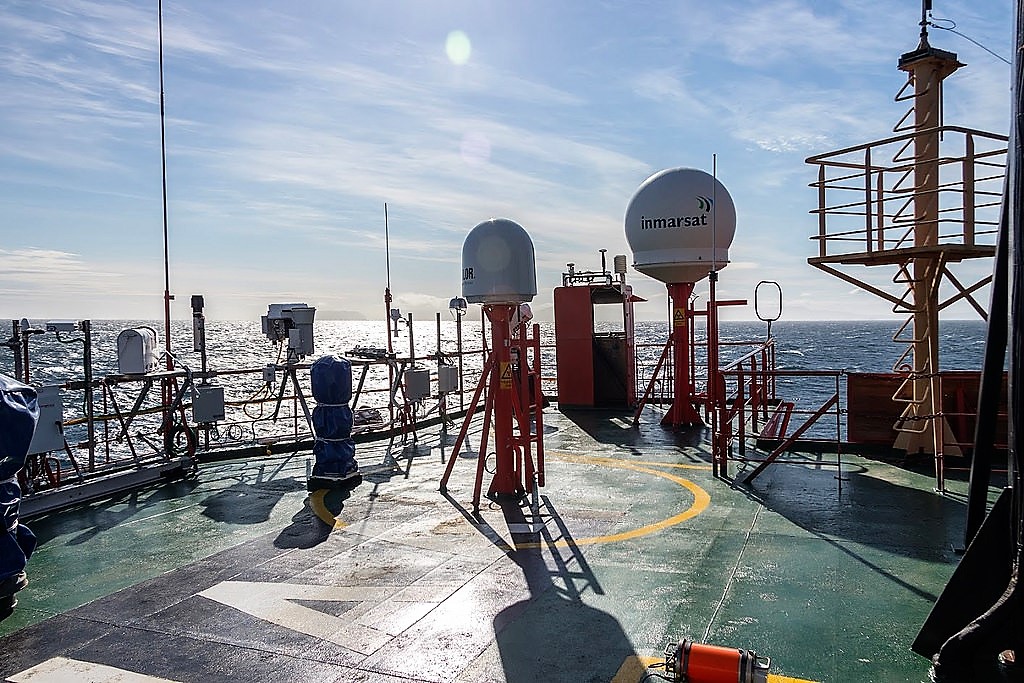Research - Current and Recent Field and Laboratory Research
The Center for Aerosol Impacts on Chemistry of the Environment (CAICE) (NSF-Chem)
Our group is one of several external institutional centers that are part of (
CAICE), centered at UC San Diego. Dr. DeMott co-leads Research Theme III, Aerosol-Climate Interactions, along with Prof. Chris Cappa of U.C. Davis. We lead laboratory studies at Colorado State using the CAICE Marine Aerosol Reference Tanks and CAICE major wave flume faclilities for sea spray particle generation and apply custom and standard instrumentation to document the physical, chemical and ice nucleation properties of sea spray and secondary marine particles. CAICE is now in its 10th and final year of studies. Final studies have documented the cirrus activation properties of primary and secondary marine particles (Ryan Patnaude dissertation) and the impact of wind speed on emission of INPs from sea spray production (Kathryn Moore dissertation) in using the new Scripps Ocean Atmosphere Research Simulator (SOARS) facility.
Southern Ocean Studies

New measurements will begin in 2023 (through 2025) via a collaborative proposal (Jay Mace and Gannet Hallar of U. Utah, Jessie at CSU; C. McCluskey of NCAR) “Elucidating the Role of Natural Aerosols in Modulating Boundary Layer Clouds and Precipitation in the Southern Ocean” based around participation in four upcoming voyages on Australian research vessels that will double the volume of current surface-based measurements to constrain SO aerosol and cloud properties. Combined with model development and analysis of past similar data sets, successful completion of this project will enable a major advance in our understanding of SO aerosol-cloud-precipitation interactions and point the way for future observational and modeling studies. The first of these voyages (MIZ) seeks to sample the unique ocean biological response that occurs with sea ice melt near Antarctica during spring. Two additional voyages, the summertime MISO and Denman (glacier) voyages will include measurements targeting interactions between the ocean, atmosphere, and biosphere, with a focus on understanding how ocean biological activity influences the aerosol, cloud, precipitation, and radiation properties across midlatitudes to Antarctica. us on various unique locations in the high latitude SO. A fourth voyage (KCG) will occur in winter and will represent the first such cold season campaign observing aerosols, clouds, and precipitation in association with a long-term measurement site at Cape Grim/Kennaook, Tasmania. Using INP, aerosol, and remote sensing data, the project will evaluate the hypotheses that 1) regional shallow cloud radiative properties are mainly a result of the coupling between the large-scale atmosphere and local aerosol production linked to the latitudinal gradient in marine productivity, and local precipitation processes, and 2) Phase partitioning in, but not precipitation from, shallow supercooled liquid clouds in the SO is primarily determined by heterogeneous ice nucleation processes, but precipitation.
The Arctic Radiation-Cloud-Aerosol-Surface-Interaction Experiment (NASA-ARCSIX)
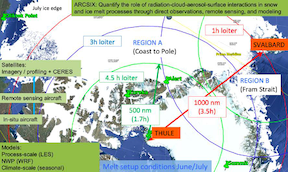
Climate and weather models exhibit significant Arctic cloud biases, including unrealistic cloud cover, too little supercooled liquid and too much cloud ice, and unrealistic seasonal variations that lead to biases in the surface radiation budget. A major source of bias is the lack of knowledge of Arctic aerosols, their properties, sources, vertical distribution, and interactions with clouds. These needs frame ARCSIX, and our group’s participation (Russell will lead this study as Paul retires) for measurements to characterize the spatial distribution and budget of aerosols that impact ice phase transitions of clouds, or ice nucleating particles (INPs), and to use these data to establish realistic representation of INPs in climate and process models for the Arctic in summer. We will fly an advanced continuous flow diffusion chamber system connected to an aerosol concentrator and will also capture and process INPs from cloud particle residuals sampled via a counterflow virtual impactor inlet. We will also fly a filter collection system for analysis of immersion freezing INP concentrations and compositions and will align all data with a comprehensive suite of aerosol measurements. ARCSIX will occur during Summer 2024, flying on the NASA P-3 aircraft from Thule, Greenland, with the additional NASA G-3 aircraft flying high for radiation measurements. Collaborative modeling studies (Ann Fridlind, NASA-GISS) will follow analysis of data from the campaign, exploring INP budget dynamics in case studies employing a cloud-layer-following Lagrangian modeling framework that can be applied identically to large-eddy simulations (LES) and climate models run in single-column mode. We will additionally employ a simple Lagrangian 1D PBL model approach to examine first-order impacts of differing INP treatments in the absence of the feedbacks that act in the LES. We will thereby seek both best understanding and practical solutions for climate models. ARCSIX will support two postdoctoral scientist positions over its 5-year span.
Cold-Air outbreak Experiment in the Sub-Arctic Region (CAESAR)
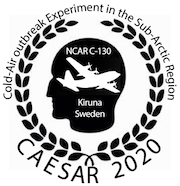
Arctic cold air outbreaks represent one of the most intense air mass transformations on Earth, and because of their well-defined origins, shallow depth, and range of aerosol influences, these clouds provide a powerful test bed for improving representation of mixed-phase cloud processes in numerical models from large-eddy through global climate scales. Within the NSF-supported CAESAR program, we will perform measurements of INPs as a critical element, because INPs are expected to strongly influence cloud phase and precipitation either directly or through invigorating secondary ice formation processes. Paul and Russell will lead this study to collect data from the NCAR/NSF C-130 research aircraft, spanning transects from the ice edge over open water to the Norwegian coast. Synergistic use of other in situ and remote sensing data, and collaborative numerical modeling investigations will occur in coordination with other related proposed efforts. We will work hand-in-hand with collaborators focused on in situ and remotely-sensed cloud microphysical property measurements to determine if long range transports in the free troposphere or marine biogenic sea spray emissions control INP sources to CAO clouds, and to document an expectation that secondary ice formation processes ultimately control precipitation. Finally, using other campaign aerosol data, INP data will be shaped toward parameterizations of INPs for use by numerical modeling collaborators at a range of scales. CAESAR flights will occur between mid-February and early April of 2024. CAESAR will support a PhD student and a postdoctoral scientist, as well as provide the basis for a summer REU program student project.
Atmospheric Rivers and The onset of sea ice MELT (ARTofMELT)
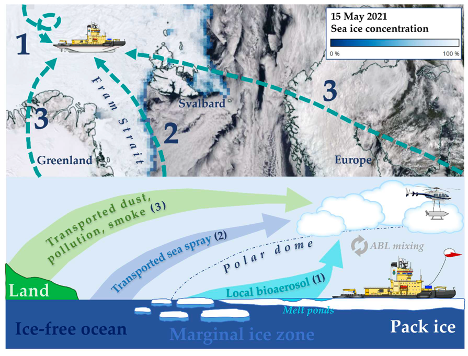
As the Arctic warms at least three times the global rate, feedbacks from clouds will lead to compounding impacts on the energy budget that consequently affect regional and global weather and climate. The impacts on the formation and evolution of Arctic clouds remain highly uncertain in part due to limited understanding of aerosols that nucleate cloud droplets (cloud condensation nuclei, CCN) and ice (ice nucleating particles, INPs). These processes may be affected by episodic warm air intrusions (WAIs) into the Arctic basin from lower latitudes that facilitate exchange of moisture and particles between the ocean and atmosphere, while simultaneously triggering and amplifying sea ice melt. Through our NSF-supported proposal (Jessie leads) “From the ocean to the air: Aerosol-cloud interactions during the onset of Arctic sea ice melt,” we test the hypotheses: 1) under background conditions, melt ponds, leads, and the marginal ice zone (MIZ) are prevalent sources of local, marine biological cloud-active aerosol, which may impact Arctic mixed-phase clouds (AMPCs) when the atmospheric boundary layer (ABL) is well-mixed; 2) transport events from over ice-free ocean introduce warmer airmasses that are decoupled from the shallow ABL over the pack ice, introducing regional marine cloud-active aerosols aloft that impact AMPCs; and 3) transport events from over land introduce warmer continental airmasses containing terrestrial CCN and INPs that impact AMPCs. The overarching goal is to assess the variability in sources and abundances of cloud-active aerosols under background and transport scenarios during Arctic melt onset. ARTofMELT will sail on the Icebreaker Oden during the next melt onset (May–Jun 2023), focusing on sampling poleward WAIs in the region north of Svalbard and the Fram Strait. A comprehensive modeling-observational investigation will ensue, mining characterization of the physical, chemical and biological makeup cloud-active aerosols on the ship and vertical profile measurements launched from the ship. Observations will guide collaborative large-eddy simulations that will evaluate changes in cloud microphysics under different scenarios.
Experiment of Sea Breeze Convection, Aerosols, Precipitation, and Environment (ESCAPE)
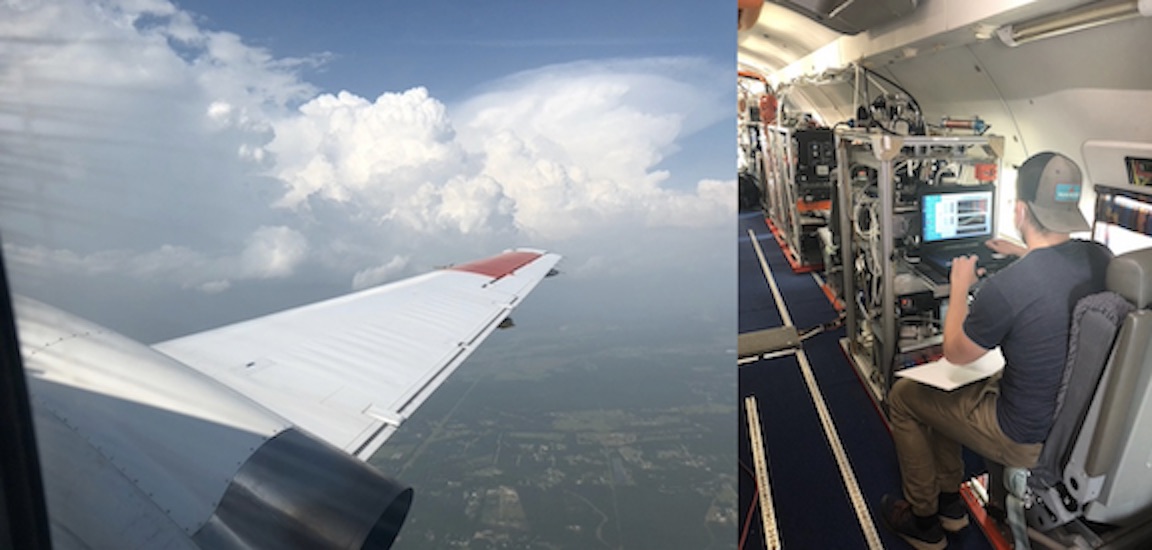
ESCAPE was a large NSF-supported mission flow on the NRC Convair-580 from the National Research Council (NRC) Canada and the SPEC Inc. LearJet-35A. The experiment took place between May 30 to June 30, 2022, based from Sugar Land Regional Airport in the Greater Houston area. ESCAPE addresses the needs to improve the representation convective clouds in multi-scale models, which is critically important because these clouds play such an important role in the Earth’s climate system as a driver of large-scale circulations and a primary mechanism for the transport of heat, moisture, aerosols, and momentum throughout the troposphere. ESCAPE focuses on understanding of convective cloud lifecycles, their environmental thermodynamic and kinematic controls, and aerosol-convection interactions. The approach used high-definition radar-based observations and the aircraft to track the lifecycle of a large number of convective cells and the results will be explored through integrated modeling-observations activities. From the standpoint of aerosol-cloud interactions and especially the role of ice nucleating particles, Houston, TX was an optimal owing to frequently developing isolated deep convection, and the interaction of onshore flow and sea-breeze convection with a range of aerosol conditions that include Saharan Dust incursions and Houston’s urban and industrial emissions. As another piece of Ryan’s dissertation (pictured during flight he served as mission scientist), he will seek to describe the varied properties of INPs in the different aerosol scenarios presented, and these results will be implemented into idealized cloud-resolving model simulations in collaboration with the van den Heever group.
Bioaerosols and Convective Clouds (BACS)
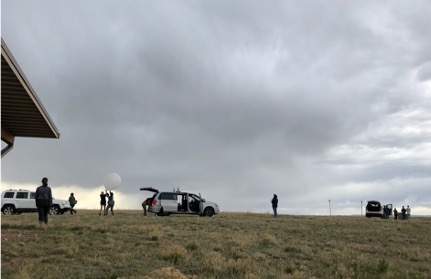
The exchange of biological material between the Earth’s surface and atmosphere is deeply important to many aspects of weather, climate, and human health. Despite their significance, the fluxes of bioaerosols are not well known in the upward or downward directions. To fill this gap, BACS is quantitatively evaluating the fluxes of bioaerosols between the terrestrial biosphere and the atmosphere, specifically targeting intact pollen, sub pollen particles, fungal spores, and bacteria. Our central hypothesis is that convective storms amplify the exchange of bioaerosol between the Earth’s surface and atmosphere, and these bioaerosols are entrained into storm updrafts thus impacting storm microphysics, dynamics, and precipitation. Via our collaborative proposal “Collaborative Research: Interactions and Feedbacks between Storms and Bioaerosols” (Russell Perkins leads) we l specifically target understanding temporal changes in bioaerosol fluxes, concentrations, and types during convective storm updrafts, storm-generated cold pools, and quiescent conditions. Our scientific aims are to: 1) quantify bioaerosol flux between the terrestrial biosphere and atmosphere concurrent with acquisition of bioaerosol identities and properties; 2) establish the vertical distribution of concentrations of bioaerosol types; and 3) assess feedback mechanisms of bioaerosols on thunderstorm properties, particularly the cold pool and its effects on the parent or subsequent storms. To achieve these aims, we are performing high temporal resolution particle flux measurements with altitude profiled microbial abundances (tower and drone measurements); detailed chemical and online bioaerosol measurements (Stone group, U. Iowa); DNA sequencing of genes for the identification of pollen, fungi and bacteria; and thermodynamic structure measurements to initialize high-resolution modeling studies (van den Heever group, CSU). Field campaigns are occurring at the NSF National Ecological Observatory Network (NEON) Central Plains Experiment Station, which is equipped with a flux tower and where the team is deploying additional aerosol and meteorological measurements in 5-week campaigns in 2022 and 2023.
Biology Integration Institute Regional OneHealth Aerobiome Discovery Network (BROADN)

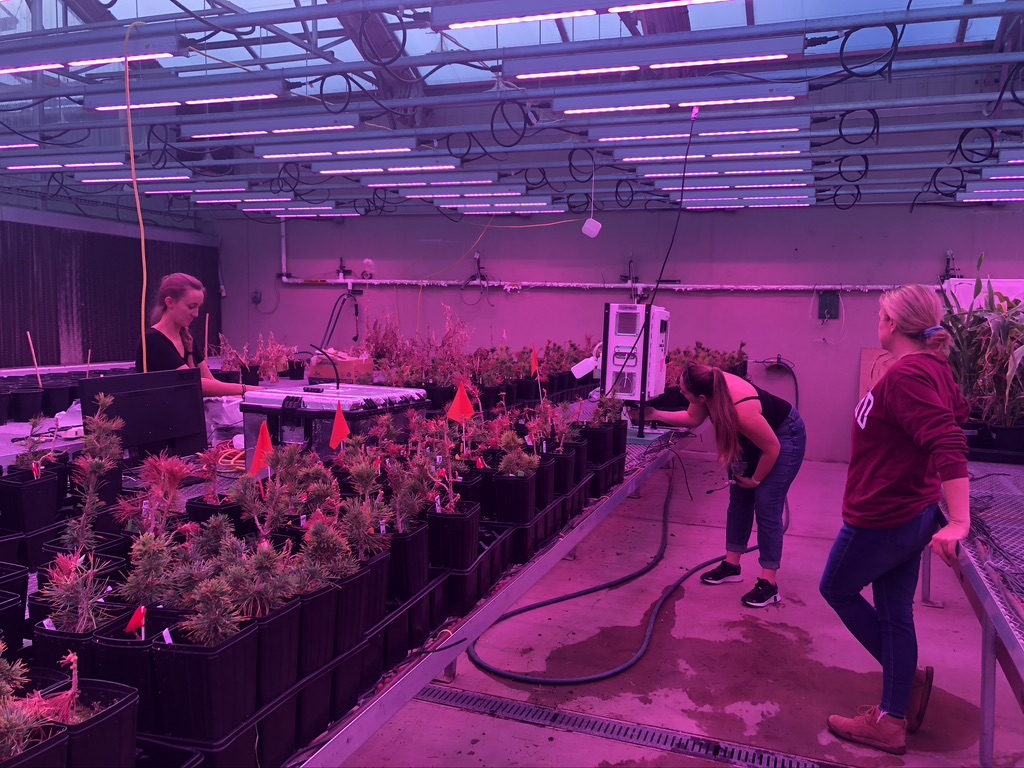
BROADN is an NSF Biological Sciences Division Center based from CSU that supports a diverse and interdisciplinary research team to investigate how the microbiome of the air is altered by environmental stresses, and how it impacts human, animal and environmental health. BROADN, funded over five-year period (2022-2027), is broken into four themes centered on the questions: 1) What microscopic organisms make up the aerobiome, and how do they vary over time and space? 2) Where does the life in the aerobiome come from, and how does composition respond to disturbances? 3) What physical and biological properties govern the movement of microscopic organisms between terrestrial reservoirs and the aerobiome? 4) Which traits allow microscopic organisms to become aerosolized, transported, and result in ecosystem impacts? Dr. DeMott co-leads Theme 1 with Dr. Jessica Metcalf (Animal Sciences), directing experiments that are based around aerosol and terrestrial sample collections and characterizations from regional NSF NEON sites (collaborative studies have occurred with BACS). Noelle Bryan is a Theme 1 postdoctoral scientist. Sonia is Deputy Director. BROADN will continue for 5 years and employ field and laboratory studies supported by a cohort of graduate students and postdoctoral scientists. Extensive public outreach will also occur.
ALaskan Pollution and Chemical Analysis (ALPACA)
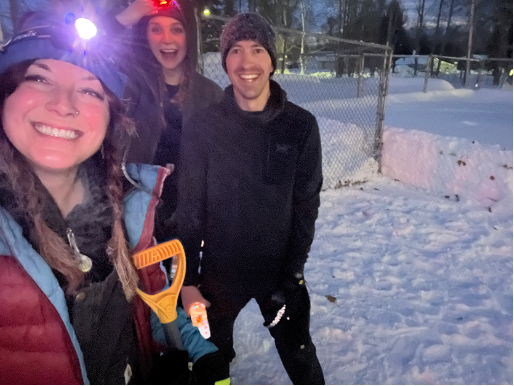
Via our NSF-funded proposal, “A comprehensive evaluation of the interactions between pollution and hazardous ice fog in Interior Alaska“, led by Jessie, we (also Russell, Paul, Emily L and alumnus Ezra Levin via Handix Scientific) participated in the major ALPACA field initiative in Fairbanks in early 2022. The project is the first to elucidate the sources and roles of INPs in ice fog formation in a polluted urban setting during cold, dark winters using a comprehensive suite of in situ observations. A comprehensive effort was focused on assessing INP properties such as freezing conditions, quantities, and composition (i.e. sources) before, during and after ice fog events. Our objectives are to build on limited previous findings and address key knowledge gaps by testing the following hypotheses: (1) organic aerosols from residential wood burning contribute to the INP population that facilitates ice fog formation, (2) INP composition captured at the beginning of events is indicative of those that seed ice fog formation, and (3) under similar temperatures and humidity, variation in INP populations affect ice fog microphysics, especially under mixed-phase conditions. Extensive outreach efforts were limited due to the COVID-19 pandemic. However, the international collaborative campaign went off smoothly, and our data set will comprise the major focus of Emily Lill’s M.S. thesis.
Arctic Permafrost Ice Nucleation (ARCSPIN)
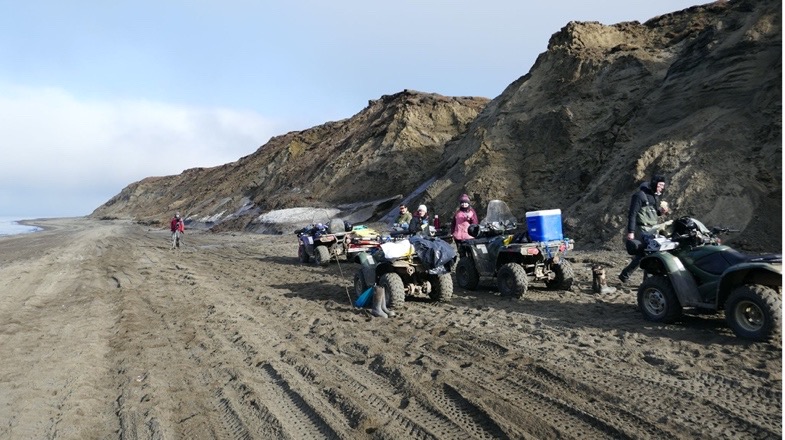
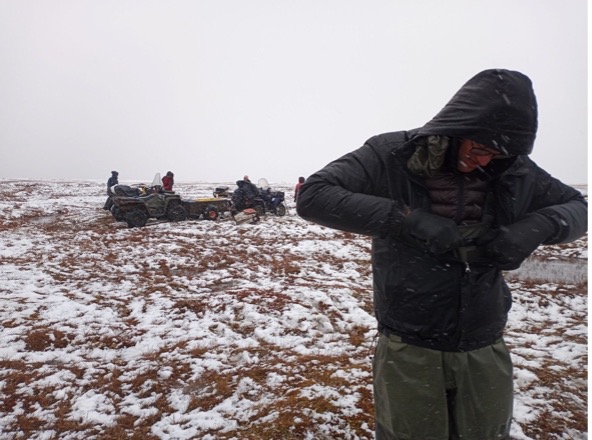
The sources and abundance of INPs from Earth’s biome are poorly understood yet appear crucial for cloud ice formation. Warmer temperatures are also triggering rapid and extensive permafrost thaw at high latitudes, which has implications for communities and wildlife living in these regions. While the issue of thawing permafrost has focused mostly on the additional release of greenhouse gases, thaw also promotes metabolic activity in microbes such as bacteria suggesting the intriguing possibility that as permafrost thaws, the microbes themselves and their byproducts could be released into lakes, rivers, and the ocean, and potentially into the atmosphere to impact cloud formation. Via our NSF-funded proposal “Bugs to clouds: Thawing permafrost, its microbes, and their possible role in Arctic climate feedbacks”, led by Jessie (with Tom, Kevin, Marina, Paul and collaborative participation of alumnus Christina McCluskey of NCAR) we are addressing the overarching hypothesis that INPs released from thawing permafrost significantly influence cloud properties in the Arctic. ARCSPIN collected and measured INPs and DNA in permafrost soil, lake water, river water, and aerosols at two NSF-supported facilities on the North Slope of Alaska in August to September 2021. These measurements were preceded by laboratory studies to examine bubble production of aerosols from permafrost-laden water. We are using these data and climate and earth system models to tie together observations in terrestrial and marine environments, and to assess the effects of clouds formed by permafrost INPs on sunlight and heat in the broader Arctic region.
Secondary Production of Ice in Cumulus Experiment (SPICULE)
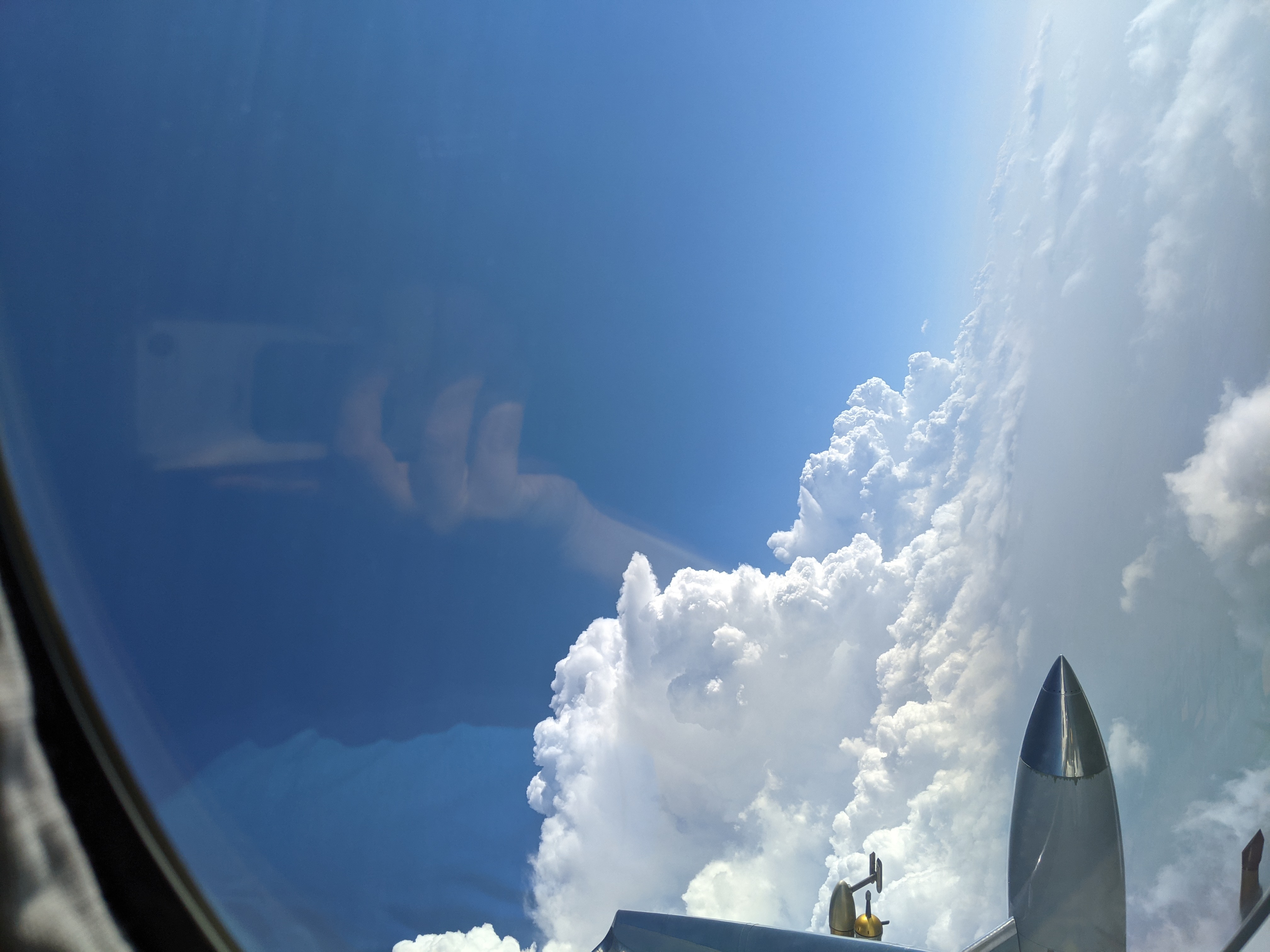
The NSF-supported SPICULE campaign focused on airborne in situ and remote observations that provide intensive measurements of aerosols and cloud microphysical and dynamic parameters to explore primary secondary ice formation process (SIP) in cumulus clouds. SPICULE took place between May 23 and June 19, 2021, based from the NCAR Aviation Facility in Broomfield, CO. Flights ranged from northern Texas to southern South Dakota, along the plains east of the Rocky Mountains. Two airborne platforms were used, the NSF/NCAR GV working subcloud and warm regions of cloud, and the SPEC Learjet model 35A working the supercooled region of a cloud. Varied conditions of cloud base temperature and updraft, as key factors in SIP, were sought. The NSF/NCAR GV was equipped with in situ microphysical probes, aerosol measurements of CN, CCN, INPs and biological aerosols, air motion sensors and the Wyoming Cloud Radar. The SPEC Learjet was equipped with state-of-the-art in situ microphysical probes, air motion sensing, and a Ka-band up/down radar. Our group performed the INP and bioaerosol measurements, with Ryan, Kathryn and Russell sharing flight scientist duties. SPICULE cases will form a major component of Ryan’s dissertation, including idealized cloud resolving model simulations to explore the possibility for end-to-end description of ice formation processes including both primary nucleation and SIP.
Understanding the natural sources of aerosols and their impacts on cloud formation and climate across Hemispheres (DE‐SC0021116)

This study funded by the DOE Office of Biological and Environmental Research via the Atmospheric System Research Program supports analyses from a variety of DOE-supported (from the DOE-ARM CACTI, Southern Great Plains, MARCUS, MICRE and COMBLE programs) and select other field study data toward the overarching goal to understand the factors leading to contrasting Northern versus Southern Hemispheric (NH vs SH) differences in populations of cloud condensation nuclei (CCN) and ice nucleating particles (INPs) over land and ocean, such that the critical influences on their variability are adequately predicted at regional and global
scales. Research is organized around two testable hypotheses: 1) CCN and INPs in marine regions are distinctly different in the NH (MOSAiC and COMBLE experiments) versus SH (MARCUS, MICRE, SOCRATES experiments) but are harmonized by consideration of differences in transported continental aerosols and differences in the sizes and compositions of regional marine CCN and INP emissions; 2) CCN and INPs feeding convective cloud systems over central continental regions in the NH and SH are dominated by similar biogenic sources that emanate from surrounding arable regions. We explore how these emissions are influenced by meteorology and season, and a major focus of analyses is application of treatments of particle suspensions prior to immersion freezing testing in order to “type” INPs in each study. Stay tuned for publications led by Paul, Ben Swanson and Emily B coming in early 2023.
Multidisciplinary drifting Observatory for Study of Arctic Climate (MOSAiC)
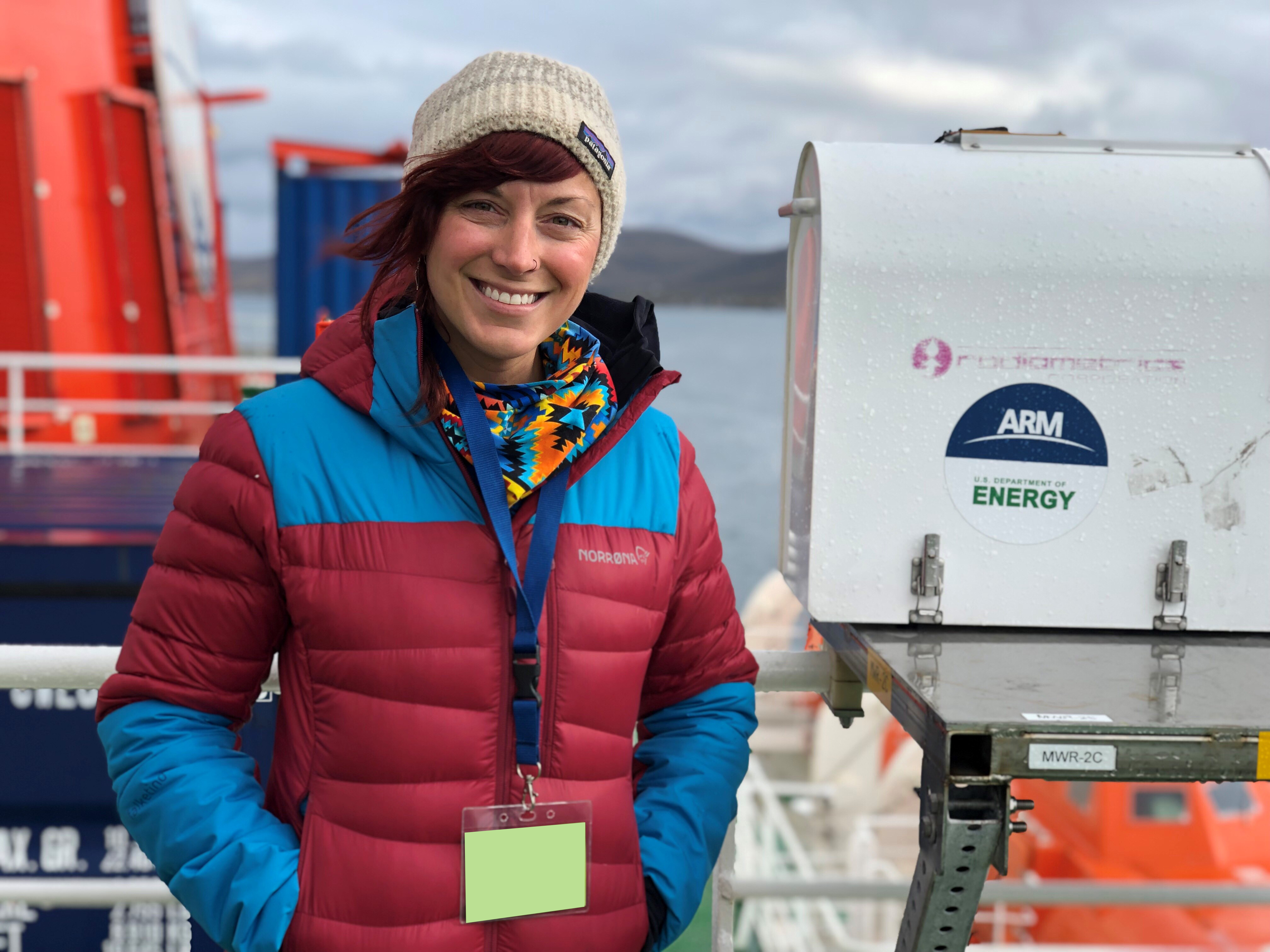
The year-long transpolar drift experiment, MOSAiC, which placed the icebreaker Polarstern adrift in the Arctic ice pack from Fall 2019 to Fall 2020, provided a unique opportunity for our group to execute a full year’s worth of INP measurements from the air (total and size-resolved), water (seawater, leads, melt ponds) and snow/ice. Such a record had not been conducted anywhere in the Arctic and no INP data existed from the central Arctic in the winter or spring, creating a significant gap in understanding influences on Arctic mixed-phase cloud (AMPC) cloud microphysics and the resulting impacts of such clouds on the surface energy budget. Under two proposals, 1) “Evaluation of ice nucleating particles and their sources in the central Arctic during MOSAiC”; 2) “Closing the gap on understudied aerosol-climate processes in the rapidly changing central Arctic”, Jessie led measurements on the Polarstern and is leading analyses of the INP data set and its integration with the larger meteorological, abiotic and biotic aerosol (our group is doing the sequencing for comparison to online bioaerosols), sea ice and water data sets. Tom, Kevin, Camille are all participating in data analyses and publications with numerous collaborators based around the questions, 1) How do seasonal changes in sea ice and air mass transport influence INP abundance and sources in the central Arctic? 2) Are marine and sea ice biological processes a significant source of atmospheric INPs as compared to terrestrial sources? 3) Are open water environments such as leads and melt ponds viable sources of INPs over the sea ice and do such environments exchange INPs with the atmosphere? 4) What are the mechanisms for coarse aerosol generation, including sea salt, biological particles, and dust, and are these important for central Arctic cloud formation? 5) What are the dominant sources of aerosols that facilitate central Arctic fog formation, and how does aerosol composition change during Arctic fog? This work will frame part of Kevin’s dissertation and all of Camille’s M.S. thesis. Jessie has already led a highlight publication in Nature Communications. See a (
story here) featuring her work.
Southern Ocean Cloud and Aerosol Studies (2017-2018)
A suit of NSF and DOE-funded studies conducted in 2017-2018 were a watershed of planning that began many years earlier and are providing a rich resource for continuing analyses of the Southern Ocean, a data-poor region with much to teach us about aerosol-cloud-climate interactions. Paul led our participation in
SOCRATES (Southern Ocean Clouds, Radiation, Aerosol Transport Experimental Studies), which occurred during January and February 2018, as part of a major collaborative Southern Ocean (SO) studies that included colleagues from across the U.S., Australia and New Zealand. SOCRATES based from Hobart, Tasmania for in situ measurement and radar/lidar studies to investigate and help resolve global climate model radiation biases over the SO as having bases from aerosol/cloud microphysical versus dynamical sources. During SOCRATES, our group led comprehensive measurements of ice nucleating particles using equivalent suites of online and offline INP measurements on the NSF/NCAR G-V aircraft (Paul and Christina McCluskey as flight scientists) and on the CSIRO R/V Investigator (CAPRICORN-2018) (Kathryn as ship scientist) We also provided WIBS-4A instruments for bioaerosol measurements on both platforms, and conducted amplicon sequencing analyses of collected aerosols over the Southern Ocean for the first time (Uetake paper in 2020) to assist understanding of cloud response to ocean biogenic aerosol emissions.
The Measurements of Aerosols, Radiation, and Clouds over the Southern Ocean (
MARCUS) and the Macquarie Island Cloud and Radiation Experiment (
MICRE)) studies also deployed major resources across the region from 2017 to 2018 under support of the DOE Atmospheric Radiation Measurement Program’s Climate Research Facility. Tom and Paul led proposals for additional INP filter collections for offline processing deployed alongside the second ARM Mobile Facility's (AMF2) on the Australian Antarctic Division’s Aurora Australis during MARCUS and a similar sampler on Macquarie Island (54.61 degrees south latitude and 158.87 degrees east longitude). These data have supported broad new descriptions of INP concentrations and compositions in relation to other aerosols over a wide area of a previously data poor region. Additional collaborative publications have examined hypotheses related to cloud properties and climate, and the data set will richly support more such analyses for years to come.
















